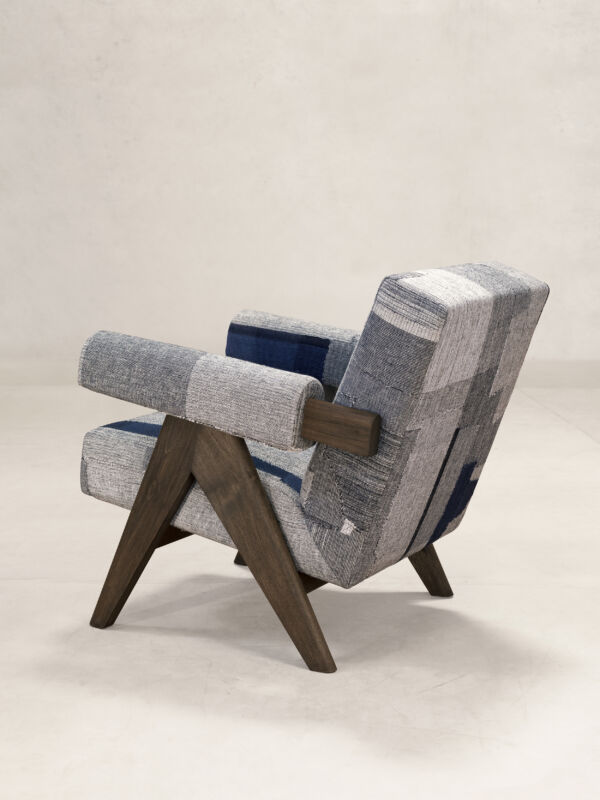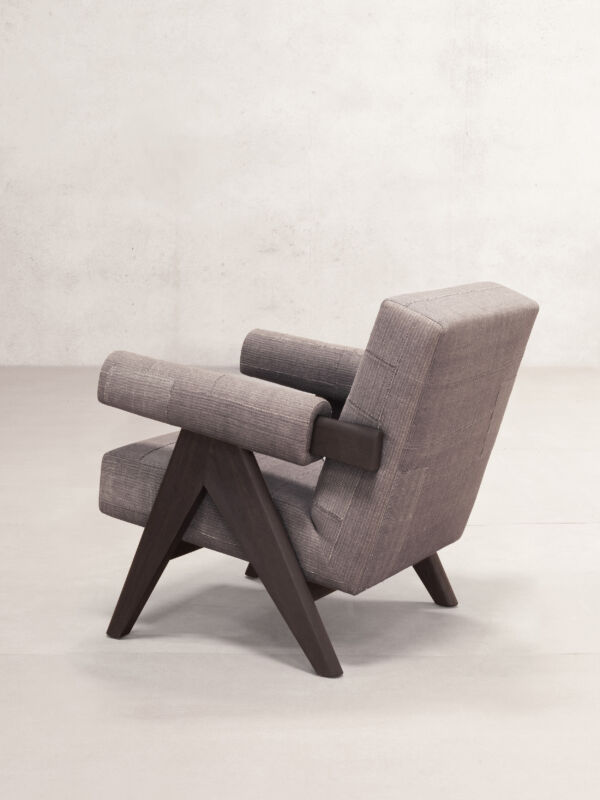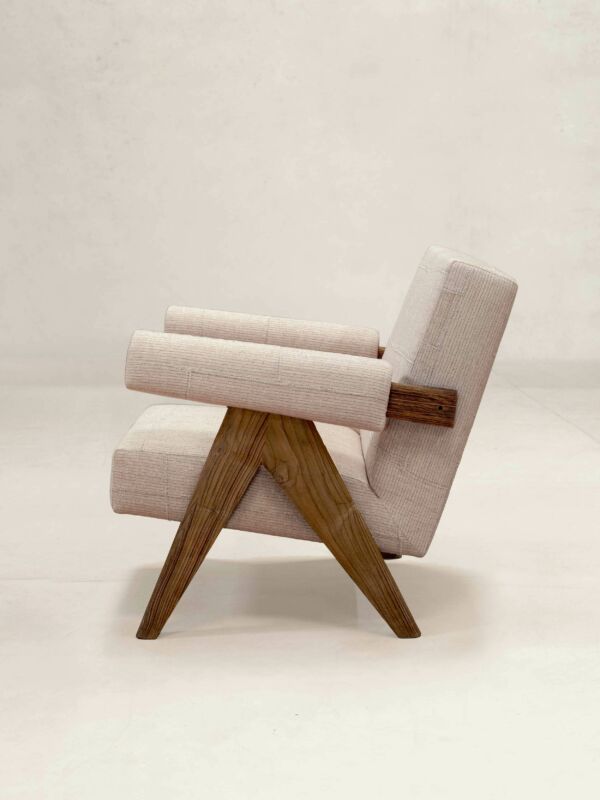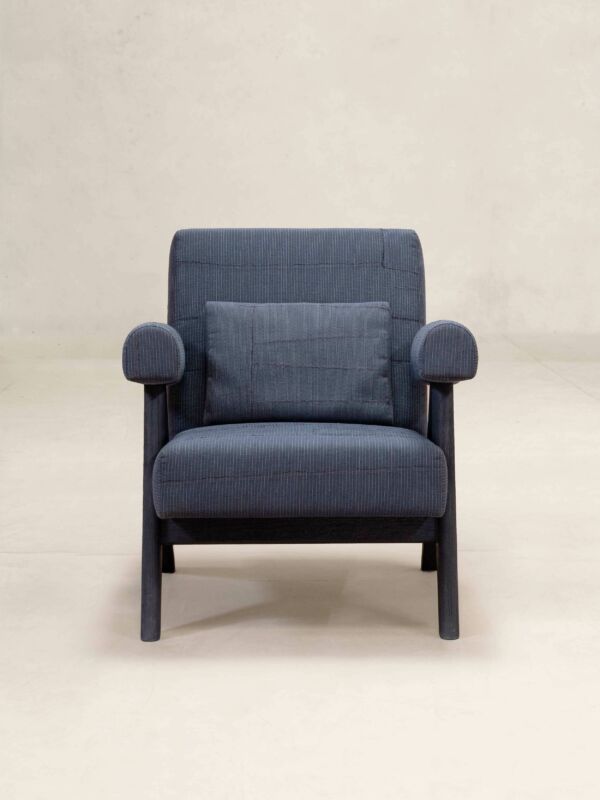In Conversation With Textile Designer Padmaja Krishnan: Crafting Cloth With the Discarded
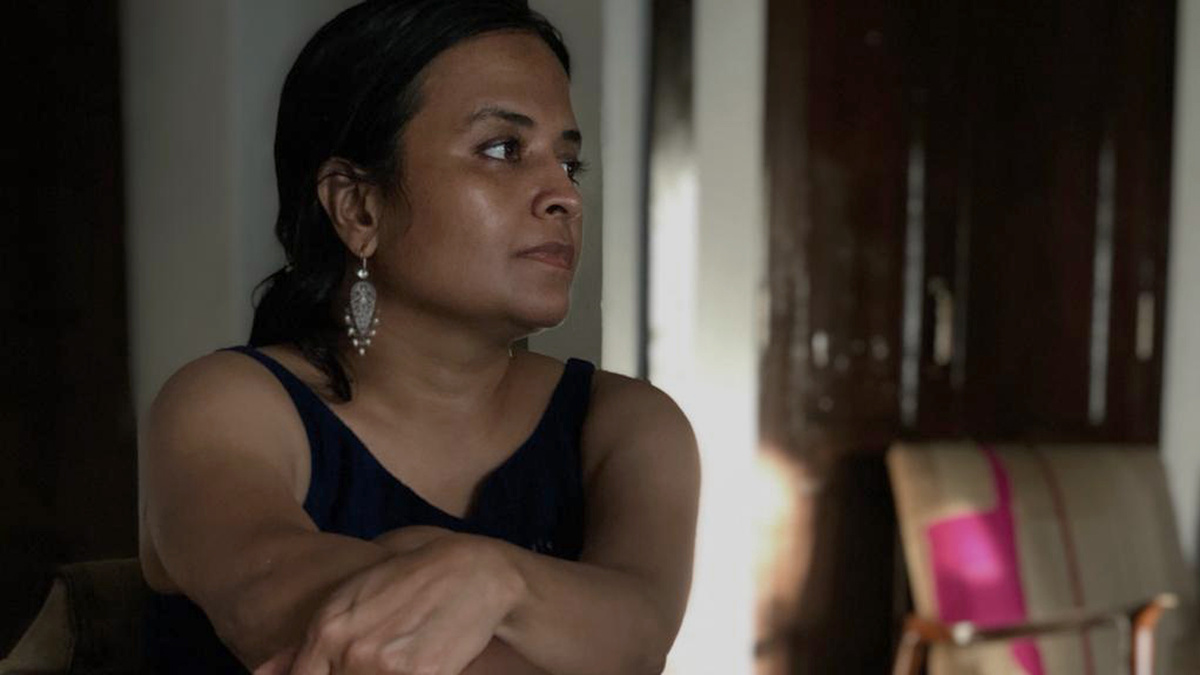
Image courtesy: Padmaja Krishnan
Parni Ray
27.02.2021
Mumbai-based fashion and textile designer Padmaja Krishnan’s clothing brand PADMAJA is known for combining traditional craft with sustainability and social responsibility.
Padmaja works with natural fibre woven by skilled rural artisans, predominantly women. Involved at every stage of textile making, she also collaborates with master weavers from West Bengal, Assam, Madhya Pradesh, Gujarat, and Andhra Pradesh.
Her extensive work with the kantha artisans of Bengal has earned her honours at the International Quilt Festival in Birmingham and has been exhibited at the Izumo Quilt Museum in Japan.
Excerpts from a lengthy chat.
Parni Ray (PR): Did you really begin sewing your own clothes in college?
Padmaja Krishnan (Padmaja): I grew up in Calcutta in the '80s and was surrounded by great textiles. It was standard for me to accompany my mother to the cloth shops to choose fabric and get clothes stitched by local tailors.
But I was often unable to get them to make the sort of clothes I wanted to wear or was unhappy with the fits. There were also limited readymade clothes in the market at the time. So I started making my own clothes. I had picked up sewing informally from a neighbouring tailoring school, so that came handy.
PR: This was before you went to the National Institute of Fashion Technology (NIFT).
Padmaja: Yes. In fact, because I enjoyed making clothes so much that my sister, who was then at the National Institute of Design, suggested that I take it up seriously and try out for NIFT. I did, eventually, and got through.
PR: Did you start your label immediately after you graduated from NIFT?
Padmaja: No! I worked in the corporate sector for a bit and very quickly realized that 9 to 5 wasn’t for me (laughs). I then worked as a textile consultant with private organisations and the Ministry of Textiles on several craft development projects. These took me to various parts of the country and introduced me first-hand to textile traditions and craft communities.
A few years into my time as a consultant I was sure that I wanted to integrate handcrafted textiles in my work and design. But I was not sure which organisation I could join or work with as a designer. When I received the Nirman entrepreneur grant in 2005, I decided to start my own studio.
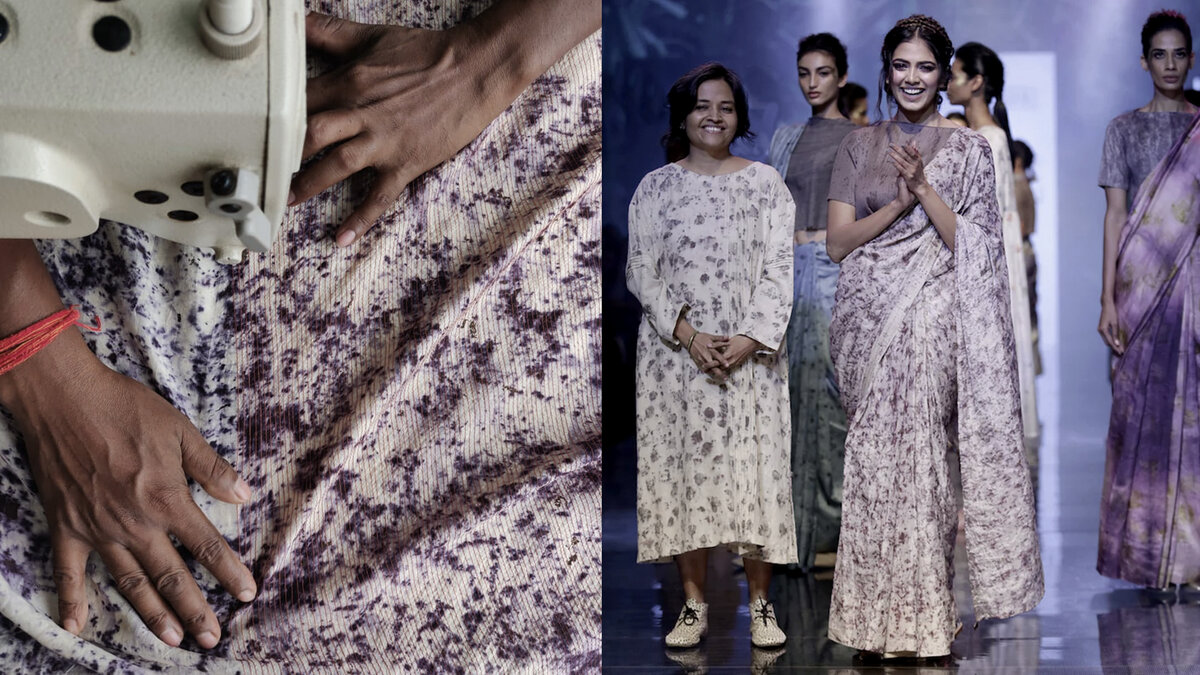
PR: It took you a while to get used to the ways of the fashion industry.
Padmaja: Well, yes! (Laughs) I remember participating in a fashion show curated by Wendell Rodricks for the Taj group, Mumbai, early on. This was under my first label, Transit Design. The show sent us a list of requirements a few days before we were to send in the garments. It mentioned that the clothes needed to have the designer’s brand label.
I mean that is standard, but at the time I had no physical labels for my brand! I had conceived it to be about good clothes sans branding and had been uncomfortable with announcing my name on the clothes. To me it felt ostentatious (laughs).
It was too late for me to get labels printed, so I asked the kantha artisans I worked with to sew the name of the brand on pieces of cloth and put them on the 20-30 pieces I was sending. And that eventually became my label.
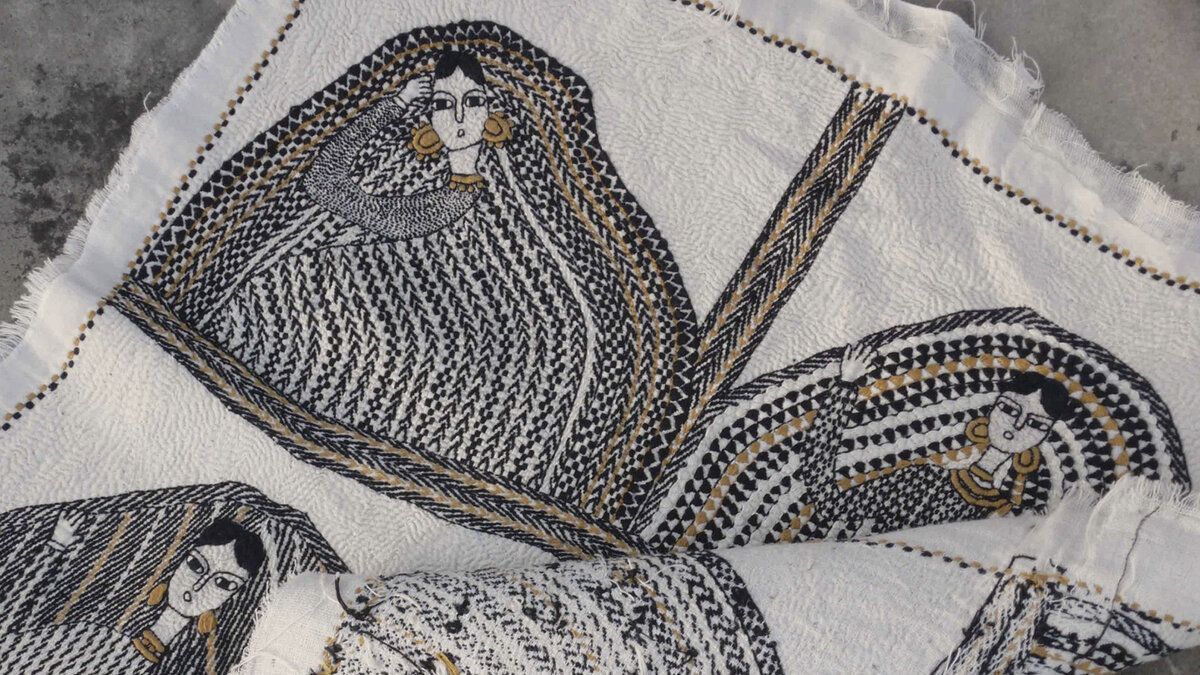
PR: You have of course collaborated with kantha artisans for years. How did you get started?
Padmaja: I was surrounded by it growing up and then at NIFT, I was introduced to the technical aspects of its making. But I think my journey with the craft really began with a paper I was asked to write for a UNESCO conference on the socio-cultural context of kantha.
I worked on it for four to five months and undertook solid, on the ground research. It took me to various parts of rural Bengal, introduced me to both old and new variants of the craft. I met embroiderers, middle men, designers.
My purpose had been to understand the transformation of the craft from a cultural to an economic activity. In the process, I learnt of several social realities of the craft, how it is practiced. Almost all of this was a revelation for me...not always pleasant (laughs).
PR: How so?
Padmaja: For one, kantha artisans, be they in West Bengal, Bihar or Orissa, are extremely underpaid. And two, the kind of designing that is being done with the craft has not contemporised it, robbing it of its spirit.
PR: Did this motivate you to start working with kantha artisans?
Padmaja: Not really. After the UNESCO conference I was asked to do a two-week design development workshop with some 60-70 kantha embroiderers. It turned out to be quite enjoyable. The participants (all women) were stunningly skilled and left me spellbound. We interacted closely and by the end of the workshop some of them asked me to give them a job.
At this point I was only just starting to think about my own studio. But I was not in the least bit interested in using kantha in my designs and resolutely against making the sort of clothes I associated with the craft. But the women were very insistent. ‘You must take Putul di, she is very skilled,’ they told me.
Turns out they were paid ₹650/month for their job as embroiderers at the organization they worked at. Putul di had three kids and if I could pay her anything more she would work for me.
I came home, recounted the incident to my family. My father asked me why I wouldn’t employ the woman. ‘Because I have no such plan,’ I told him. So he said, ‘make one now’. Long story short, I hired her. That’s how it began.
PR: For a while you were only making frameable pieces...
Padmaja: In a year, I had a much larger group of embroiderers. We were based in my studio and only made collector’s items. We toyed with the idea of making products but the standard of the work was so high that making something like a cushion cover out of them felt lame.
Also, the people who acquired the kanthas we made repeatedly told us that they wouldn’t risk ruining the items by using them. So we decided to make display pieces only. Eventually the group’s work got displayed in several places, USA, Japan, Lisbon, Hong Kong.
PR: Would you say your experience with kantha has seeped into your present work?
Padmaja: It’s safe to say that of the many textile crafts I have worked with, kantha remains the closest to my heart. I think what I connected with most is its simplicity. It doesn’t have many stitches, just the one basic running stitch, which goes up and down. So it has a very meditative feel.
Aside from that of course there is the philosophy that governs kantha – you work with what you find, you make beautiful things out of discarded bits, you make something that is more than the sum of its parts. I think I have carried that spirit of the craft with me. Besides that I do still use the stitch quality in many of my work.
PR: You work with different craftspeople across the country. How do you typically collaborate with them, given that you are often far away?
Padmaja: I travel regularly to the places where the craftspeople I work with are based – be it Maheshwar (in the state of Madhya Pradesh) or Bhuj (in the state of Gujarat). Collaboration relies so much on meeting people one-on-one that it is impossible to do it completely from a distance.
Having said that, technology has changed drastically in the past decade and it is now quite possible to have a video call with weavers and embroiders. Needless to say, this comes into play only when you have an established relationship with the weavers you are working with, but it has been a game changer. You still have to make the trip ever so often, but you can now rely on these modes of communication to deal with the small niggling issues.
PR: You frequently work with organisations who mediate your relationship with the craftspeople you work with.
Padmaja: They usually put me in touch with the weavers working with them, yes.
PR: How do you decide on the organisations you work with?
Padmaja: Having worked with a variety of agencies engaged with craftspeople at the very beginning of my career, I am aware of how exploitative the (handcrafted) textile sector can be. Weavers are chronically underpaid and overworked almost everywhere.
As a designer you tend to slip into these existing systems. Not only do you become complicit in their exploitative practices, you even end up facilitating them. I was eager to avoid this. Right from the start, therefore, I sought out collaborators who respect the skills of the craftspeople they work with and pay fairly.
I seek a high level of integrity in work. So I chose to work with organisations that are considerate of the needs and autonomy of the people they work with. I often pick organisations that work with women because I cannot imagine the development of a society without the education and empowerment of women.
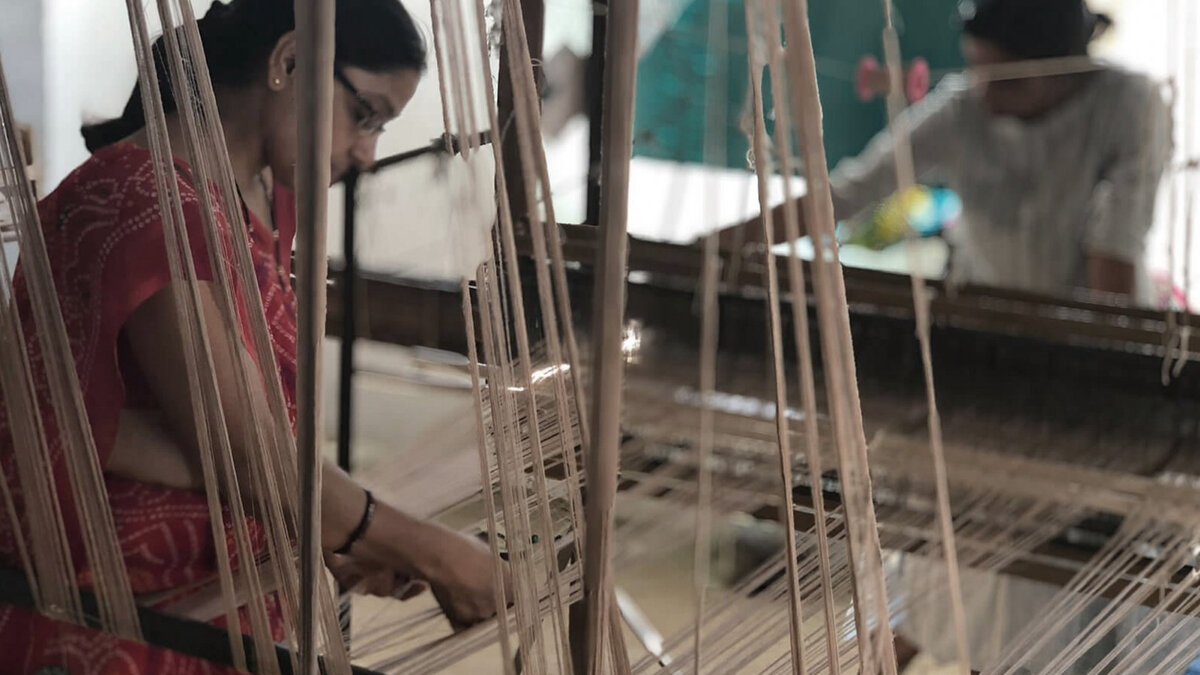
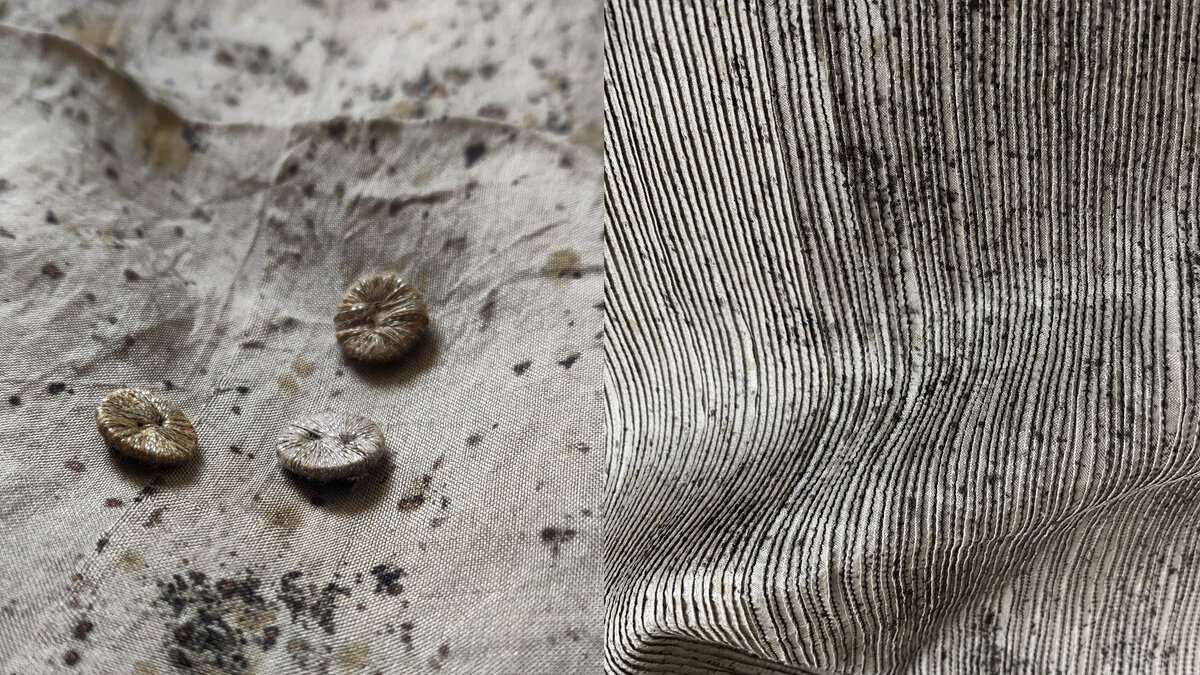
PR: Tell me about the upholstery fabric you have been designing for Phantom Hands. Is it cotton based?
Padmaja: Yes. The fabric we have created for Phantom Hands is made of recycled cotton scraps and actually continues from my ‘Slow and Useless’ series.
PR: This was a 2012 series you did focused on patchwork...
Padmaja: Yes, the ‘Slow and Useless’ is an ongoing series that arose from a very simple idea – using patchwork techniques to recycle the excess fabric pieces we discard in the process of making clothes for the Padmaja label.
It is by no means a revolutionary idea. Growing up, I watched my mother save every piece of clothing the family discarded to make patchwork quilts. I still have many of these, they have bits of my father’s shirts, childhood dresses…
As a maker I have come to value such reuse in a different manner. When you are involved at every stage of the things you make you know the materials you have used. You value the time and effort that went into making them, so you try to keep them from going to waste.
We have been saving textile scraps at the studio since the very beginning. A few years ago, I started creating fabric with them. The clothes I made with this worked very well. Because the fabric is quite heavy, I thought it could be used for upholstery purposes.
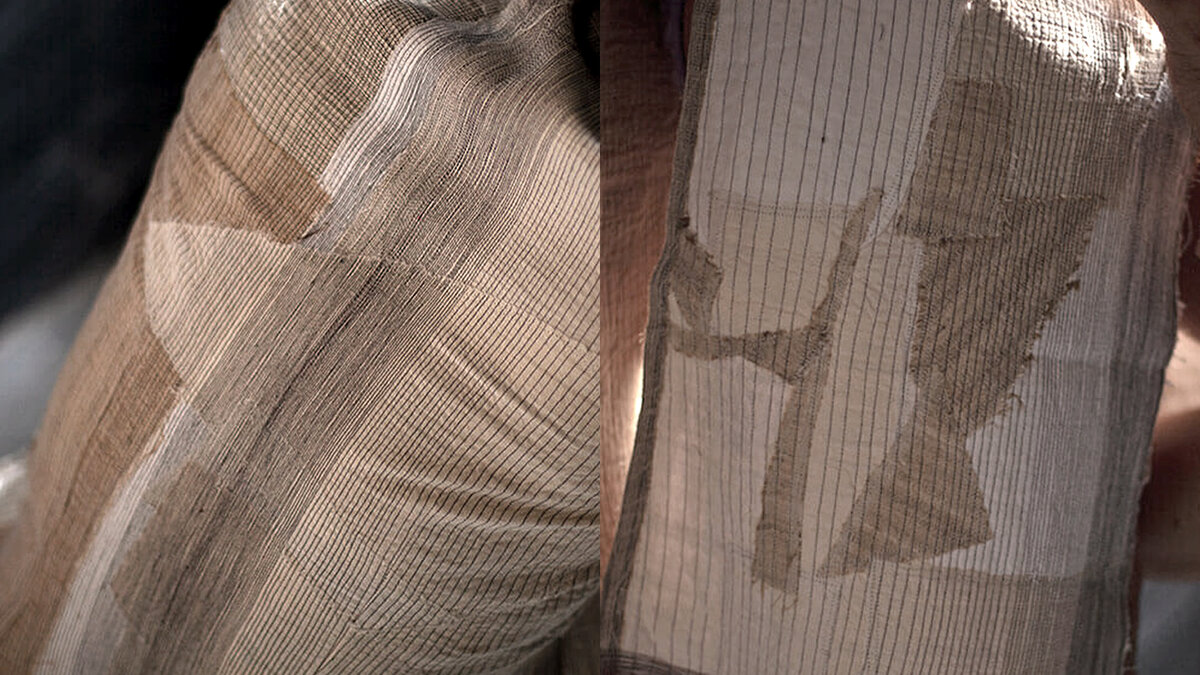
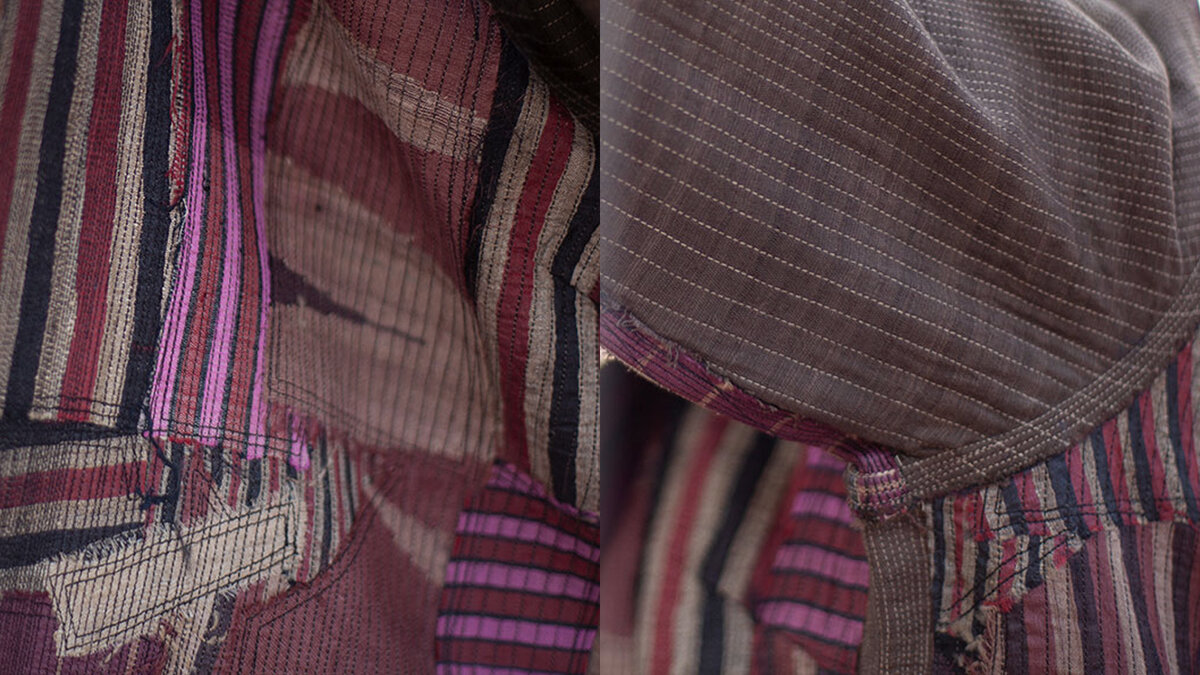
PR: What has the process of converting these pieces to upholstery been like?
Padmaja: We took a year to test things out. Given the particularities of the fabric, we took time to figure out how to make it manufacturing friendly. I am glad we finally found a way to do this while maintaining Phantom Hands and Padmaja's individual brand aesthetic.
The KeSa collection by Padmaja launched in 2021 with the limited edition upholstered easy chair from Phantom Hands’ existing Project Chandigarh series.
PR: Did you have to change any aspect of the usual method in which you make your patchwork fabric?
Padmaja: We didn’t have to alter our process, but we did finetune it. Making the fabric is a time consuming, labourious process. Since we are working with unpredictable shapes and dimensions of cloth, each yard of the fabric needs to be designed individually each time. It has to then go through various stages of hand- and machine-stitching, fusing, ironing. Producing each metre of the fabric can thus take up to eight days.
We took time to figure out how to simplify this process for upholstery purposes, given that standardisation is impossible. I am glad that we found a way to do this while keeping Phantom Hands and Padmaja’s individual aesthetic identities intact.
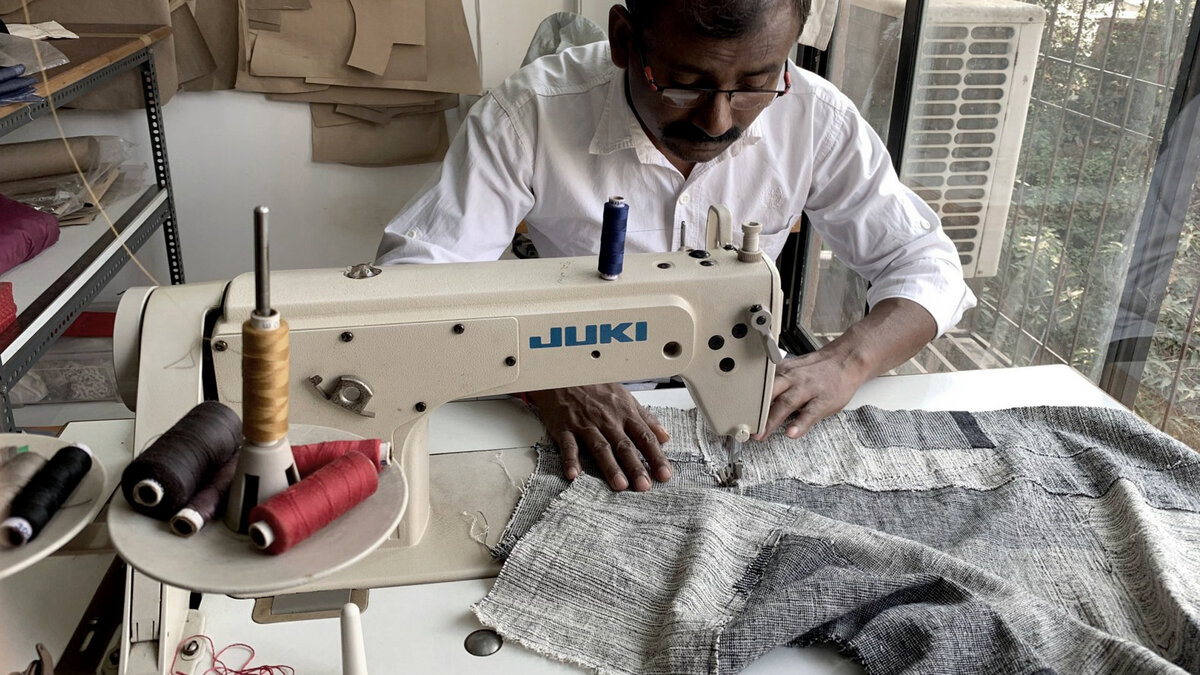
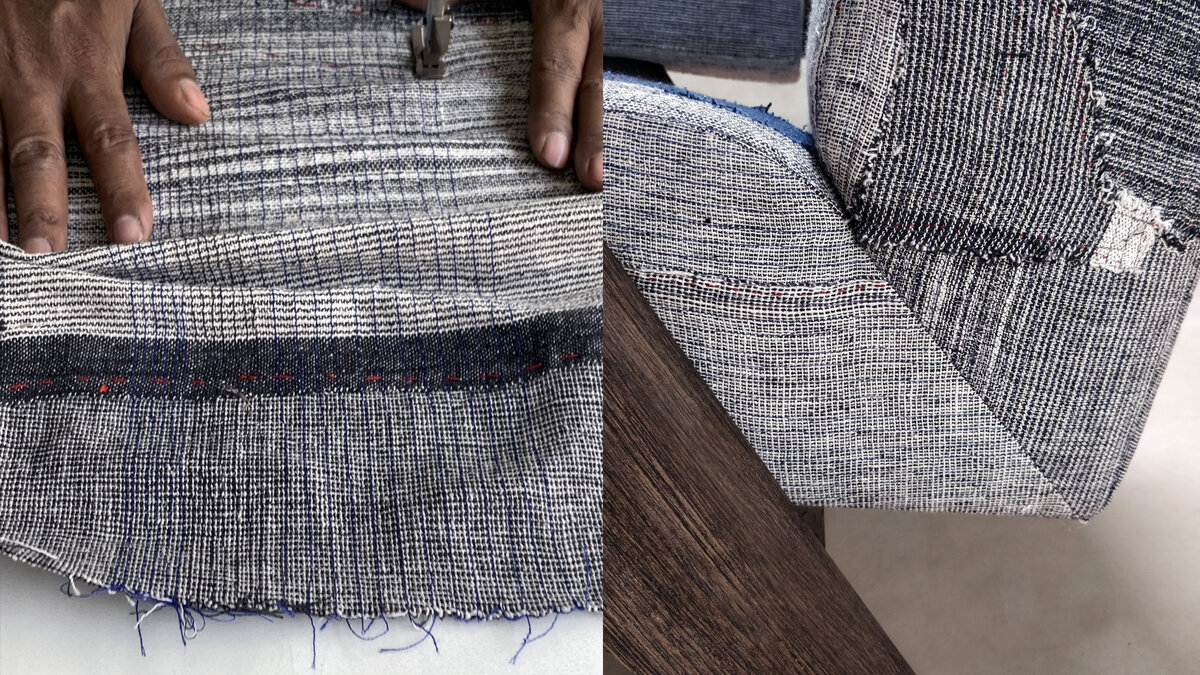
PR: ‘PADMAJA’s aesthetic relies considerably on its objective of combining traditional skills with sustainability. It regularly features on lists of green fashion initiatives in India. Now, we both know that sustainability isn’t an easy subject to talk about. I am eager to know how you cut through that heaviness and describe your aim as wanting to ‘combine sustainability and social responsibility with humour and delight’...
Padmaja (Pauses) For me, humour is a mark of prosperity. To look at economic parameters alone when talking about social development can be very restrictive. Humour and delight are, in my opinion, quite distinct parameters of growth and empowerment. I think joy is a marker of human dignity and I see it as a sign of growth far more fundamental, long lasting and significant, than financial prosperity alone.
PR: What have you learnt from your time running a creative enterprise focused on social responsibility?
Padmaja: That the social responsibility aspect of my business is my own pursuit, I can’t expect every customer to find it interesting or be on board with it. At the end of the day, a buyer wants to buy a good product and what I make needs to deliver. The rest of the story, about how I do what I do, comes later.
I, however, see it as my responsibility as an entrepreneur, and an individual committed to the causes I stand for, to make my consumers conscious of their options. That is what I would say is the challenge.
The challenge is also to make the connection between sustainability and valuation apparent. As a designer, I understand being sustainable means ensuring that the things I make will last for years. That they can be hand-washed at home and not lose colour. To ensure this quality I have to build a team whose skills and expertise I trust completely. And if I do trust their abilities a 100 percent then I need to be able to compensate them adequately. That is what guarantees that the whole process is sustainable.
Otherwise, let's face it, a lot of shoddy work gets passed off on the pretext of being ‘handmade’. Making by hand is a beautiful process, but it is not just a process, not an empty beggars bowl seeking alms. What is made by hand has its own dignity and it must be able to stand for itself.
